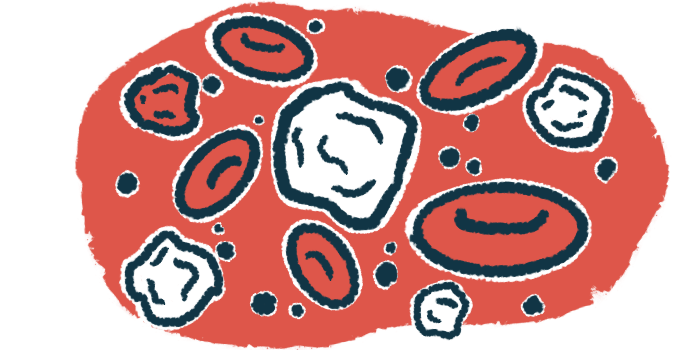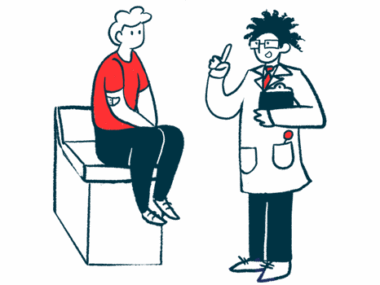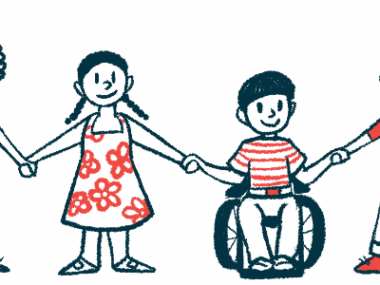Inflammatory signals linked to slow wound healing in RDEB
Researchers say therapies should target certain molecules in wounds
Written by |

A buildup of pro-inflammatory signaling molecules in skin wounds may explain the slow healing process experienced by people with recessive dystrophic epidermolysis bullosa (RDEB), a study suggested.
The researchers said the findings support the development of therapies targeting wound-associated pro-inflammatory signals to prevent the progression of the wounds to a chronic state and promote healing.
The study, “Cross-sectional analysis of wound-associated soluble factors in early, established, and chronic wounds of recessive dystrophic epidermolysis bullosa patients,” was published in the Archives of Dermatological Research.
RDEB is caused by mutations in both copies of the COL7A1 gene, leading to a lack or dysfunction of type VII collagen, a protein that helps connect different layers of skin. As with other types of epidermolysis bullosa, people with RDEB have fragile skin that easily blisters and tears, resulting in open wounds.
Slow-healing skin wounds represent the primary health-related burden for RDEB patients, according to the research team, led by scientists at Thomas Jefferson University in Philadelphia.
Looking at molecules to understand wound healing
“The molecular and cellular events outlining or regulating progression of RDEB wounds to chronic state remain not well defined,” the team wrote.
They examined molecules in wound fluids to identify changes associated with healing progression.
The researchers measured the levels of immune signaling molecules and growth factors in fluids in early blisters (one to two days old) from 76 RDEB patients. They also assessed fluids leaking from wounds, called exudates, deemed early (one to seven days old), established (one to three weeks old), or chronic (more than three weeks old), as well as chronic venous ulcers.
Blood tests for chemokines, a type of molecule that attracts immune cells to sites of inflammation, revealed significantly higher levels of CXCL8 in the exudates from early and established RDEB wounds than blister fluids. CXCL8 levels were marginally lower in exudates from chronic lesions and similar to those of venous ulcers. Nearly all the RDEB samples examined followed this pattern.
CXCL8 “may provide constitutive recruitment of [immune cells] that hallmark a stalled inflammatory phase and contributes to continuous tissue damage and progression of wounds to chronic state,” the researchers wrote.
Elevated levels of CXCL1 were also found in the exudates of established wounds, and CCL3 and CCL4 were present at higher levels in venous ulcers. In comparison, CCL20, CXCL5, and CXCL10 were significantly higher in blister fluids than in exudates.
Multiple cytokines, or proteins that act as messengers between immune cells, were consistently detected in RDEB wound exudates. Tests showed lower levels of interleukin-1-beta (IL-1 beta), IL-17, IL-6, IL-10, and IL-18 in blister fluids but rose substantially in early and established wounds.
Among all cytokines tested, there was a consistent buildup of pro-inflammatory IL-1 beta. It was undetectable in blister fluid but was found at increasingly higher levels across early, established, and chronic wounds. Changes in IL-1-beta also matched changes in CXCL8, suggesting “a mechanistic link between these two pro-inflammatory molecules and their crucial role in RDEB wound [development],” the team wrote.
While not detectable in venous ulcers, IL-17 was found at low levels in blister fluids and early wound exudates, but rose to significantly higher levels in established wounds. IL-10, a known anti-inflammatory cytokine, was also elevated in early and established wounds and was somewhat lower in chronic wounds. IL-10 levels in all wounds were significantly higher than in venous ulcers.
In a trend analysis, data suggested that increases in IL-6, IL-17, and IL-10 slowed the progression of wound healing.
When the researchers examined growth factors, or proteins that stimulate cell growth, changes were noted across different wound types. Pro-angiogenic angiopoietin 2 (Ang-2) and macrophage colony-stimulating factor (M-CSF) were consistently higher in blister fluids. In contrast, vascular endothelial growth factor (VEGF), granulocyte colony-stimulating factor (G-CSF), and hepatocyte growth factor (HGF) were all higher in chronic wounds.
Collectively, the levels of HGF, VEGF, and G-CSF tended to rise along with wound progression, whereas Ang-2 and M-CSF levels were elevated in early wounds and substantially dropped in the established and chronic wounds.
“These data identified several distinct molecular signatures of RDEB lesions,” the researchers wrote. “Our study suggests that pharmacological targeting of [IL-1 beta]/CXCL8-dependent signaling could be tested as an approach to reduce wound-associated pro-inflammatory signals, prevent progression of the wounds to chronic state.”






